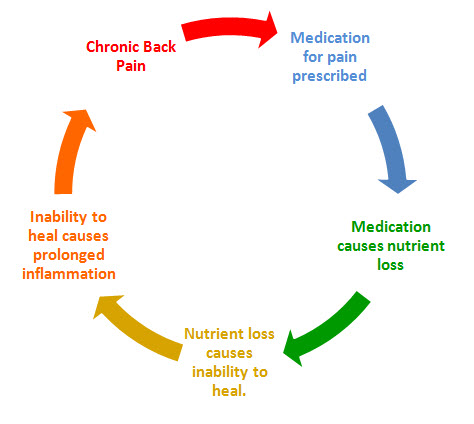Vitamin E
Vitamin E is actually composed of a family of substances known as delta
tocopherol. The one with the most potent and biological activity is alpha
tocopherol. Supplements commonly list vitamin E as d-alpha tocopherol
E). Vitamin E is absorbed in the small intestine after being emulsified
with other dietary fats. 20-50% of dietary vitamin E is absorbed.
Vitamin E is important for protecting blood vessels from damaging LDL
“bad cholesterol particles”. It also plays roles in protecting cell
membranes from oxidative damage.
Signs & Symptoms of Vitamin E Deficiency:
Poor immune function
Ataxia (loss of balance and dizziness)
Pigmented retinopathy
Infertility
Myopathy (muscle pain)
Poor reflexes
Neuropathy
Dry skin
Opthalmoplegia
Vitamin E has been shown to be beneficial in the following conditions:
Alzheimer’s
Tardive dyskinesia
Cataracts
Poor Immunity
Parkinson’s disease
Ischemia reperfusion injuries
Coronary heart disease
Pre menstrual syndrome (PMS)
Fibrocystic Breast Disease
Arthritis
Dermatitis
Psoriasis
Atherosclerosis
Mercury toxicity
Drugs, medications, or additives that may deplete or interfere with
Vitamin E metabolism:
Alcohol
Isoniazid
Anticonvulsants such as phenobarbitol, phenytoin, and
carbamazepine
Orlistat
Olestra (a food additive found in many fat free products)
Mineral oil (when taken consistently in higher doses)
Cholestyramine
Colesevelam (Welchol)
Colestipol
** Cholecystectomy (gall bladder removal) can lead to vitamin E
deficiency through malabsorption.
Laboratory testing for Vitamin E:
Plasma
Red cell hemolysis
Expiratory pentane or ethane
Genetic defect on chromosome 8 (alpha-TTP)
Lymphocyte functional assays (Spectracell labs)
Food Sources:
Sunflower seeds, coconut, peanuts, cod liver oil, walnut, apple,
sweet potatoes, almonds, and pecans
Vitamin E is actually composed of a family of substances known as delta tocopherol. The one with the most potent and biological activity is alpha tocopherol. Supplements commonly list vitamin E as d-alpha tocopherol E). Vitamin E is absorbed in the small intestine after being emulsified with other dietary fats. 20-50% of dietary vitamin E is absorbed. Vitamin E is important for protecting blood vessels from damaging LDL “bad cholesterol particles”. It also plays roles in protecting cell membranes from oxidative damage.
Signs & Symptoms of Vitamin E Deficiency:
Poor immune function
Ataxia (loss of balance and dizziness)
Pigmented retinopathy
Infertility
Myopathy (muscle pain)
Poor reflexes
Neuropathy
Dry skin
Opthalmoplegia
Vitamin E has been shown to be beneficial in the following conditions:
Alzheimer’s
Tardive dyskinesia
Cataracts
Poor Immunity
Parkinson’s disease
Ischemia reperfusion injuries
Coronary heart disease
Pre menstrual syndrome (PMS)
Fibrocystic Breast Disease
Arthritis
Dermatitis
Psoriasis
Atherosclerosis
Mercury toxicity
Drugs, medications, or additives that may deplete or interfere with Vitamin E metabolism:
Alcohol
Isoniazid
Anticonvulsants such as phenobarbitol, phenytoin, and
carbamazepine
Orlistat
Olestra (a food additive found in many fat free products)
Mineral oil (when taken consistently in higher doses)
Cholestyramine
Colesevelam (Welchol)
Colestipol
** Cholecystectomy (gall bladder removal) can lead to vitamin E
deficiency through malabsorption.
Laboratory testing for Vitamin E:
Plasma
Red cell hemolysis
Expiratory pentane or ethane
Genetic defect on chromosome 8 (alpha-TTP)
Lymphocyte functional assays (Spectracell labs)
Food Sources:
Sunflower seeds, coconut, peanuts, cod liver oil, walnut, apple, sweet potatoes, almonds, and pecans
















